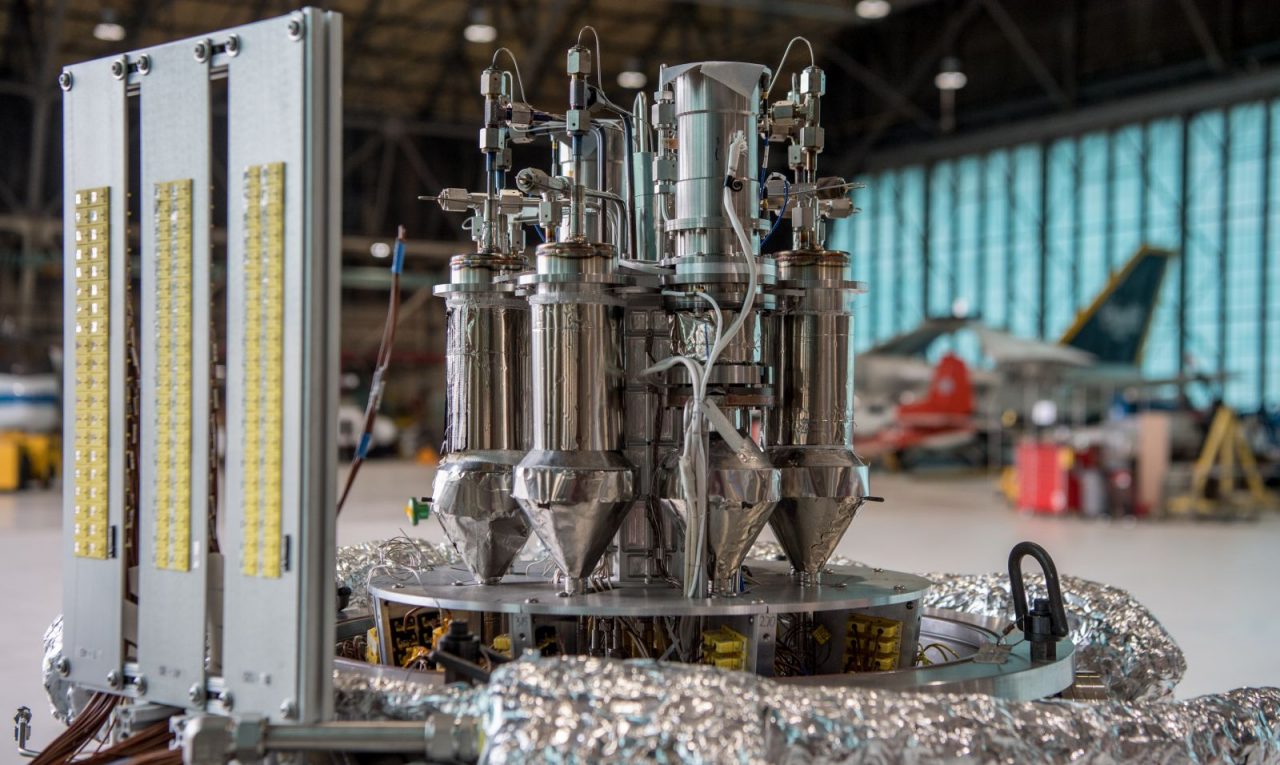NASA begins testing new type of portable atomic reactors

NASA Space Agency announced the start of testing a new type of uranium atomic facilities, which the organization's experts suggest using on Mars or other planets in the solar system. The portable nuclear reactor was developed as part of the Kilopower project.
Actually, this is the name of the reactor, which is capable of producing up to 10 kW of electrical power within ten years. Uranium-235 metal is used as fuel in such a reactor. The heat carrier is liquid sodium. The heat produced by the reactor will be driven by a Stirling engine to set in motion a special piston. And this piston, in turn, is connected to the generator to produce electricity.
The authors of the project are specialists from the NASA John Glenn Research Center in Cleveland, USA. Also among the developers is a team of experts from the NASA Marshall Space Flight Center in Huntsville. The reactor itself for the entire installation is being developed by the Oak Ridge National Laboratory with the participation of other US Department of Energy agencies. Tests are planned in the state of Nevada.

During the experiments, scientists will turn on the reactor in continuous operation for up to 28 hours with full power. Patrick McClure, one of the representatives of the project team, said: “This reactor allows to provide a high energy density of the power source with the ability to work regardless of solar energy or orientation, it can function without problems in extreme conditions on the surface of other planets, including Mars.”
According to representatives of the project, this technology can be used in various agency projects. Ultimately, scientists plan to stimulate a qualitative leap in space research. With the new power source, space travelers will not need energy for several years. The main advantage of the system is the simplicity of its design.
Currently, NASA is using radioisotope thermoelectric generators (RTGs). For example, this source of energy works in the case of Curiosity. But in RTGs plutonium-238 is used, which, as already reported at Geektimes, has become quite scarce. Plus, RTGs can provide no more than a few hundred watts of power. For the needs of astronauts who are sent to other planets, this is clearly not enough.
Earlier it was reported that the reactor power can be adjusted depending on the specific mission. In this case, only the heat-electric part will be modified, the atomic element will be approximately the same for all configurations.

The reactor is a cylinder, the material for which served as an alloy of 7% molybdenum and highly enriched uranium 235. Its diameter is 11 centimeters, length - 25 cm, weight - 35 kg. A single boron carbide reactor core is located inside a 3.7 cm channel.
Representatives of NASA decided to add molybdenum in order to impart mechanical strength and stability of uranium to phase transitions during heating. The rod will be used to adjust reactivity. To reduce the critical mass, it was decided to surround the reactor with a beryllium oxide neutron reflector. Heat pipes are inserted into it. Segment protection from lithium and tungsten hydride layers is also provided.
The reactor was already tested in 2016 in the center of Glenn. Then, however, a reactor simulator and 8 Stirling generators were used.
A significant advantage of Kilopower is that it is cheaper than RTGs. The fact is that 35 kg of highly enriched uranium-235 costs about 500 thousand US dollars. But for RTG plutonium-238 is needed with a price of about $ 50 million for 45 kg. There are reactor and disadvantages. So, it is much heavier than the same RTGs. The reactor weighs more than 300 kg, while RTGs rarely exceed 50 kg. The heaviest elements of the Kilopower design are the reactor vessel and radiation protection.
In general, a system of this type can really provide energy for a small colony of people. If there are several reactors, then the electricity produced by them is enough for a much larger colony. Plus you can imagine that colonists on other planets will be able to use solar panels. As for Mars, there is water here, and if there is almost inexhaustible energy, this will solve many problems for residents or guests of the Red Planet.
All Articles